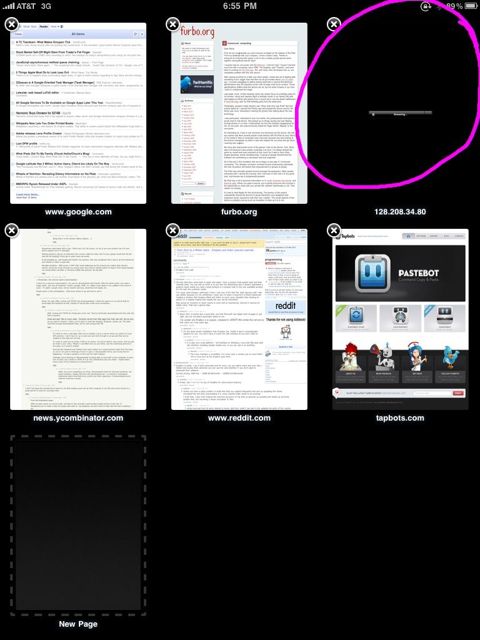New details of the iPhone 4 have me pretty pissed at Apple.
I’ve dismissed most of the criticisms leveled against the Apple iPad as clueless. The few I’ve been sympathetic to are things that can and likely will be fixed with a software update. There is, however, one thing that’s been bothering me, the iPad only has 256MB of RAM, like the iPhone 3 Gs.
Until I got my own iPad, the 256MB RAM limit was just an academic annoyance, but it quickly became clear that it was a chintzy move on Apple’s part. Mobile Safari on the iPad only lets you open 8 different “tabs” at once, but it often struggles to keep even a fraction of that number loaded. Often if I switch between tabs, it ends up having to reload the pages, which is slow. It’s even worse if I switch to another app and then back, then it often has to reload all the pages.
I put some of this down to the fact that it was the first release of iOS for the iPad, and assumed it would be improved any day by a software update (which has yet to materialize). A software update could only go so far though, since the larger screen size on the iPad would likely drive up memory requirements. And, of course, the eagerly awaited update of iOS 4 for the iPad would bring multitasking for third party apps, which would drive up memory requirements even more.
Well, now I learn that the iPhone 4 is confirmed to have 512MB of RAM, twice whats in the iPad (even though it has a smaller screen resolution). This comes less than three months after shipping the first iPad, and less than two months after shipping the iPad WiFi-3G model I have. I know that things move pretty fast in the tech industry, which is why I didn’t get bent out of shape when apple cut the price of the original iPhone by $200 only a few months after launch, but this really pisses me off.
The poor experience “multitasking” with Apple’s own apps on the iPad is the really my only big complaint with the device, and now its pretty clear that it’s likely that annoyance is going to extend to 3rd party apps when iOS 4 makes it to the iPad this fall.


